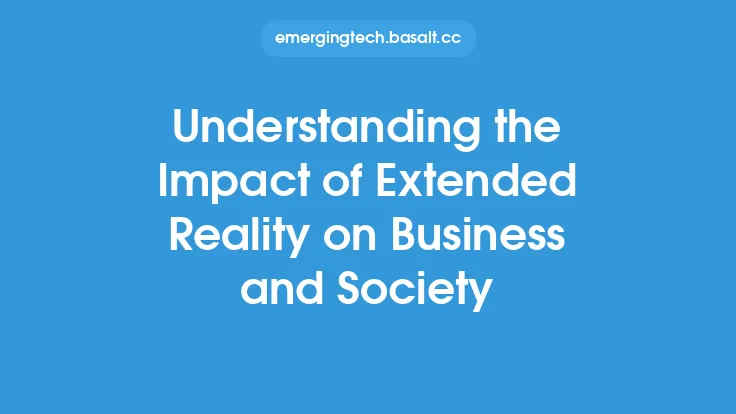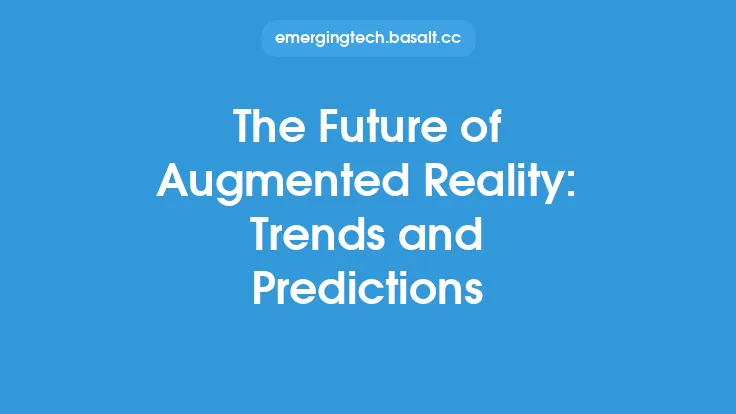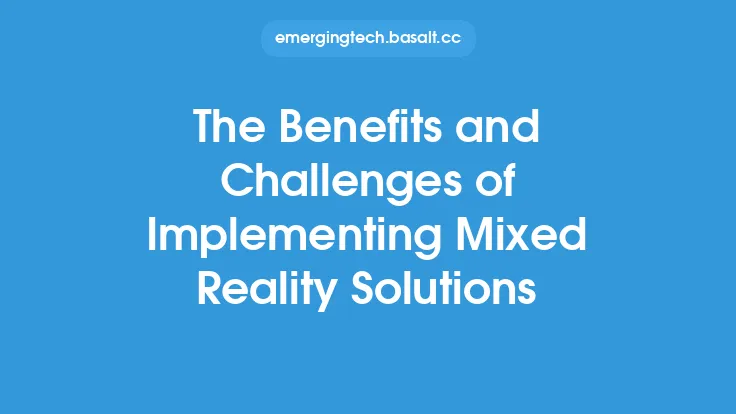The world of virtual and augmented reality is rapidly expanding, with new technologies and innovations emerging every day. As a result, it can be challenging to keep track of the different types of technologies and their unique characteristics. In particular, augmented reality (AR) is often confused with other emerging technologies, such as virtual reality (VR), mixed reality (MR), and the Internet of Things (IoT). However, each of these technologies has its own distinct features and applications, and understanding the differences between them is crucial for developers, businesses, and consumers alike.
Introduction to Augmented Reality
Augmented reality is a technology that overlays digital information onto the real world, using a device's camera and display to blend the physical and virtual environments. AR can be experienced through a variety of devices, including smartphones, tablets, smart glasses, and head-mounted displays. The key characteristic of AR is that it enhances the real world, rather than replacing it, and provides users with a more interactive and immersive experience. AR applications can range from simple games and social media filters to complex industrial and educational tools.
Virtual Reality (VR) vs. Augmented Reality (AR)
Virtual reality, on the other hand, is a technology that creates a completely artificial environment, shutting out the physical world and immersing users in a virtual one. VR typically requires a headset or other device that covers the user's eyes and ears, providing a fully immersive experience. While AR enhances the real world, VR replaces it, and the two technologies have distinct use cases and applications. VR is often used for gaming, entertainment, and simulation-based training, while AR is used for a wider range of applications, including education, marketing, and industrial training.
Mixed Reality (MR) and Its Relationship to AR
Mixed reality is a technology that combines elements of both AR and VR, blurring the lines between the physical and virtual worlds. MR uses advanced sensors and cameras to track the user's environment and overlay digital information onto it, creating a hybrid experience that is both interactive and immersive. MR is often used in applications that require a high degree of precision and accuracy, such as industrial design, architecture, and healthcare. While MR is related to AR, it is a distinct technology that requires more advanced hardware and software capabilities.
The Internet of Things (IoT) and Its Connection to AR
The Internet of Things is a network of physical devices, vehicles, and other items that are embedded with sensors, software, and connectivity, allowing them to collect and exchange data. IoT devices can range from simple sensors and actuators to complex systems and machines, and are often used in applications such as smart homes, cities, and industries. While IoT is a distinct technology from AR, the two are connected in that AR can be used to enhance and interact with IoT devices, providing users with a more intuitive and immersive experience. For example, AR can be used to visualize data from IoT sensors, or to provide instructions and guidance for interacting with IoT devices.
Technical Differences Between AR and Other Emerging Technologies
From a technical perspective, AR and other emerging technologies differ in their underlying architectures and requirements. AR typically requires a device with a camera, display, and processor, as well as software that can track the user's environment and overlay digital information onto it. VR, on the other hand, requires a headset or other device that can provide a fully immersive experience, as well as advanced sensors and tracking systems. MR requires even more advanced hardware and software capabilities, including high-resolution displays, advanced sensors, and sophisticated tracking systems. IoT devices, meanwhile, require embedded sensors, software, and connectivity, as well as protocols and standards for data exchange and communication.
Applications and Use Cases for AR and Other Emerging Technologies
The applications and use cases for AR and other emerging technologies are diverse and rapidly expanding. AR is being used in industries such as education, healthcare, and manufacturing, as well as in consumer applications such as gaming and social media. VR is being used in applications such as gaming, entertainment, and simulation-based training, while MR is being used in industries such as industrial design, architecture, and healthcare. IoT is being used in applications such as smart homes, cities, and industries, as well as in consumer products such as wearables and appliances. As these technologies continue to evolve and improve, we can expect to see even more innovative and impactful applications in the future.
Conclusion
In conclusion, augmented reality is a unique and powerful technology that is distinct from other emerging technologies such as virtual reality, mixed reality, and the Internet of Things. While these technologies share some similarities and overlap in their applications and use cases, they each have their own distinct characteristics and requirements. By understanding the differences between these technologies, developers, businesses, and consumers can better navigate the rapidly evolving landscape of virtual and augmented reality, and unlock the full potential of these innovative technologies. Whether you are a developer looking to build AR applications, a business looking to leverage AR for marketing and training, or a consumer looking to experience the latest AR games and experiences, understanding the differences between AR and other emerging technologies is crucial for success.





